
Most likely native to Southeast Asia, colocasia (Colocasia esculenta, Zones 7b–12) is used by many gardeners for its large, tropical-looking foliage. This plant also has a long history of being used in cooking. Visitors to Hawaii are often treated to poi, a starchy Polynesian edible food paste made from its rootlike corm. Common names of colocasias include taro, eddo, dasheen, and elephant’s ear. Elephant’s ear is the most commonly used common name, but that can be confusing because plants called elephant’s ear come from several different genera, including Colocasia, Alocasia, and Xanthosoma, all of which are members of the arum family (Araceae). While there are several different species of colocasia, cultivars and hybrids of Colocasia esculenta are the main ones you will find being sold in garden centers to home gardeners.
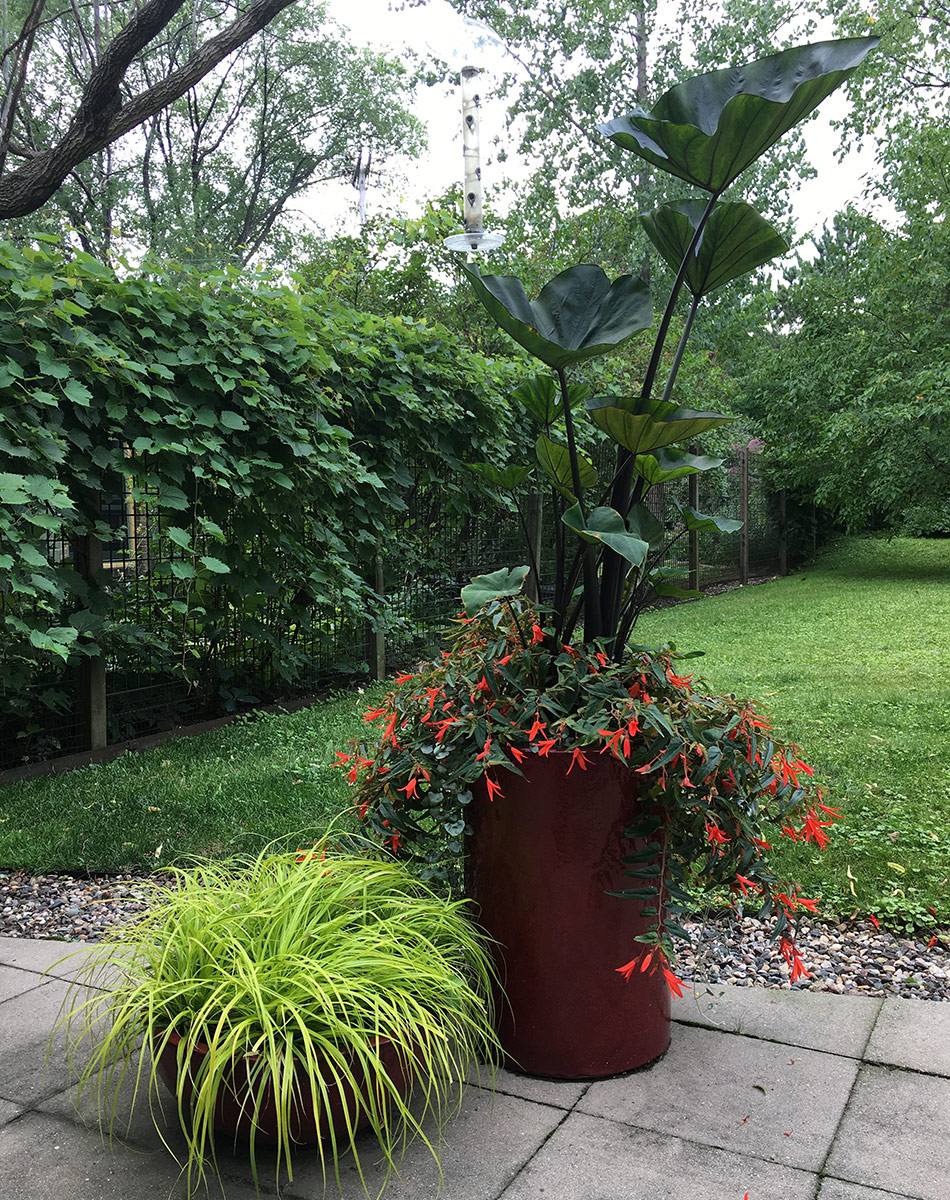
A history of ornamental excellence
I don’t grow colocasia for food. In fact, unless cooked, every part of this plant is poisonous to humans. I grow it for its wonderfully large, bodacious, in-your-face foliage. It adds just the right bold texture to a container or a tropical feel to the herbaceous border. In the South and southeastern United States, colocasia is easy to grow and appreciates the heat and humidity of our growing season. Leaf size can range from less than 6 inches wide all the way to 2 feet across. I’ve been growing and collecting colocasias since the early 2000s. It was during this time that many new ornamental varieties came to the market. Many of these were bred by now-retired University of Hawaii professor John Cho, who was already well known for breeding colocasia as a food crop. Dr. Cho started breeding ornamental cultivars, which became the main catalysts for many of the wonderful selections now on the market.
Provide rich soil for best results
Dan Benarcik, a horticulturalist at Chanticleer Garden in Pennsylvania, wrote an article that I love on colocasia and other elephants’ ears. I reached out to Dan for his advice on growing colocasia in our region. He told me, “These plants don’t need anything fancy. They love rich, organic, moisture-laden compost for their roots to get ‘down and dirty’ in. You can spend a lot of money on fine soil choices, but my best result has come from the bottom of the compost heap. Even if the material isn’t yet fully decomposed, they will thrive.” Dan and I have had similar experiences, as I have found that colocasia loves moist and organically rich soil. Adding additional supplemental fertilizer at regular intervals during the growing season will yield large, attractive foliage. As for sun exposure, most varieties thrive in full sun or partial shade.
Hardiness and overwintering
Is colocasia hardy in our region? This is a tricky question, and I hesitate to refer to colocasia as solidly hardy. I do have several selections that have persisted year after year in my garden in Tennessee. Others just lasted a few years and then faded away. As a rule of thumb, gardeners in Zone 7b and below should take more care in overwintering if they want plants to return every year.
I asked plantsman and garden designer Troy Mardin for his thoughts on hardiness. He said, “Many varieties of colocasia are hardy in much of the South, but I always pot up some offsets from my favorite, harder-to-find varieties in late summer and overwinter them.” This is solid advice, as colocasias are easy to store over the winter and you don’t need to keep them actively growing. I pot offsets up, always keeping them on the dry side, and overwinter them in a garden shed or storage room where it doesn’t freeze.
Picking the Best Varieties
There really is no best-of-the-best colocasia. There is only one that is best for you and your situation. I do have my favorites, and modern breeding has brought us a whirlwind of new cultivars. Many new cultivars have vibrantly colored stems or shiny leaves that can really stand out. Here are a few spectacular cultivars.
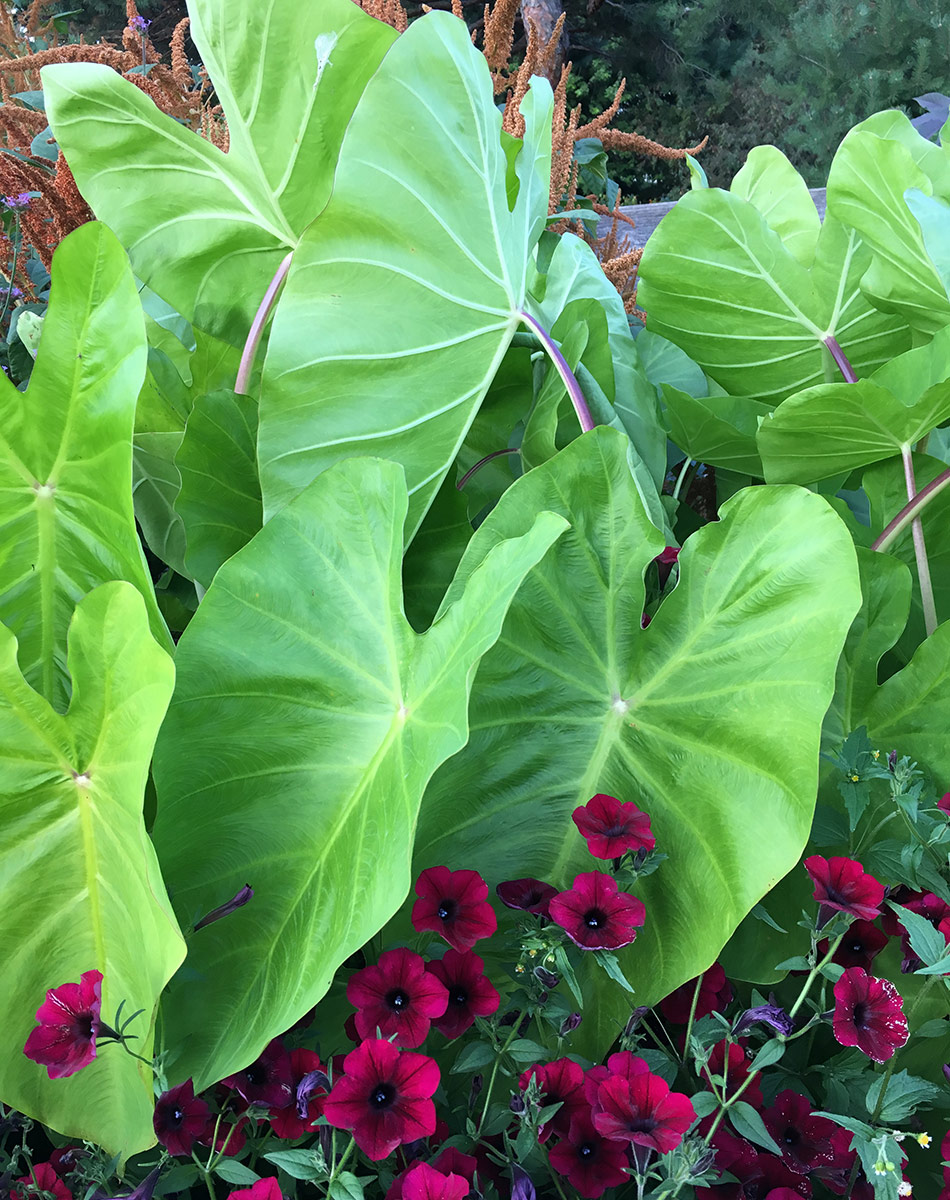
Royal Hawaiian® ‘Maui Gold’ colocasia
Colocasia esculenta ‘Maui Gold’, Zones 8–12
Royal Hawaiian® ‘Maui Gold’ colocasia is a clump-forming elephant’s ear that was released to the public in 2012. Stems arch up to 4 feet high and produce gold-chartreuse leaves. Plant it in the ground or in containers. In combination with dark foliage and complementary blooming annuals, you can’t go wrong with this selection.
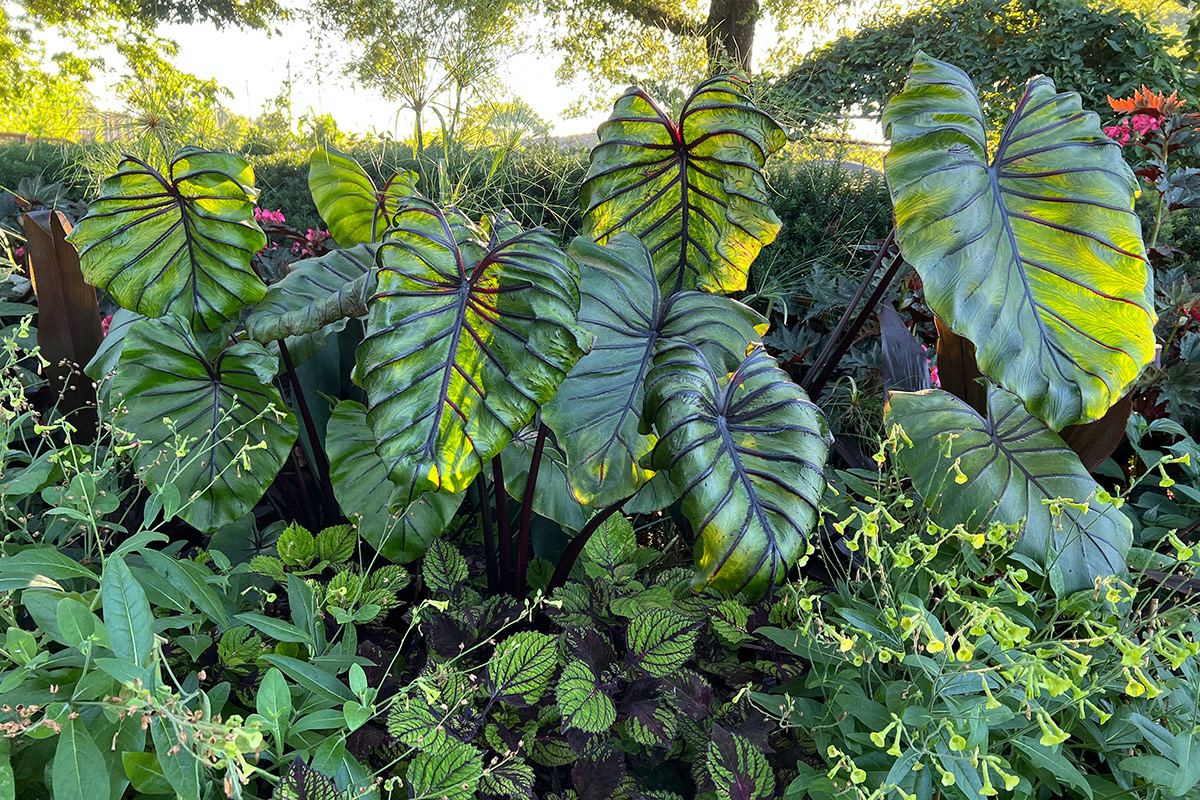
Pharaohs Mask™ colocasia
Colocasia ‘Cophama’, Zones 7b–12
Pharaohs Mask™ colocasia brings bright green leaves with bulging purple veins to the garden. This plant is honestly hard to look away from. Perhaps a little slower growing than other selections, it still performs admirably. Leaves can be as high as 4 feet tall at season’s end. This is such a special plant that it is worth overwintering in colder zones.
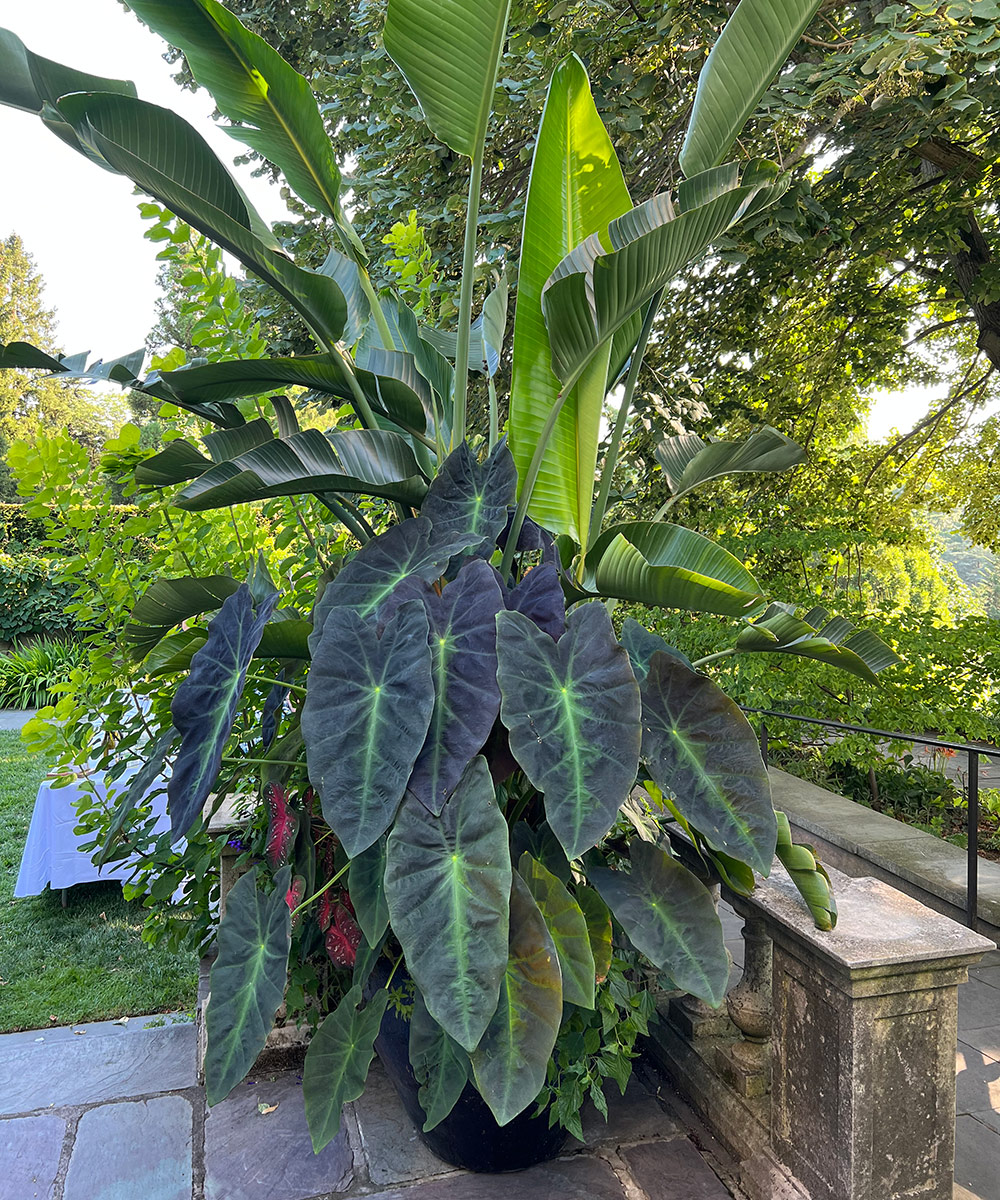
‘Illustris’ colocasia
Colocasia esculenta var. antiquorum ‘Illustris’, Zones 7b–12
‘Illustris’ is an oldie but a goodie. Enormous, elongated heart-shape leaves are dusty black with green veins. Older clumps can grow up to 5 feet tall during the growing season. Overall hassle-free in the garden, this plant can even hold its own as the sole occupant of a garden container.
These truly are wonderful plants that should be included in almost every garden. Easy to grow year-round in warmer zones and overwinter in colder ones, they will continue to provide massive appeal year after year.
For more Southeast regional reports, click here.
—Andy Pulte is a faculty member in the plant sciences department at the University of Tennessee.
Photos: Andy Pulte


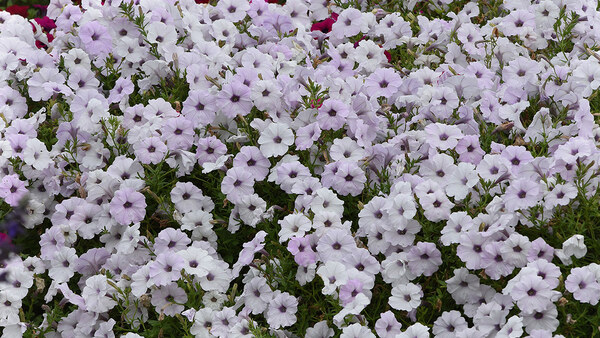


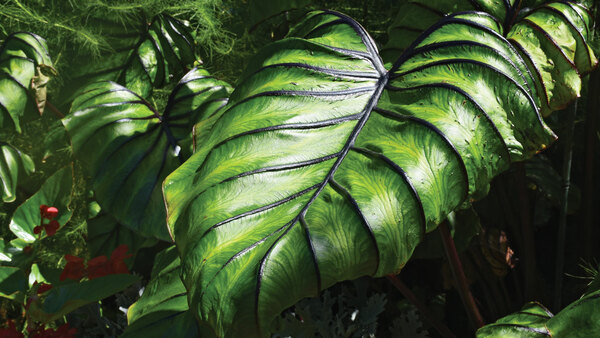












Comments
I adore my bottom mount refrigerator! It's changed the game in my kitchen. The style is sleek and contemporary, and the functionality of having the fridge on top and the freezer on the bottom is unparalleled. No more leaning down to get frozen objects since everything is now at eye level. Excellent choice for anybody wishing to update their kitchen!
Log in or create an account to post a comment.
Sign up Log in